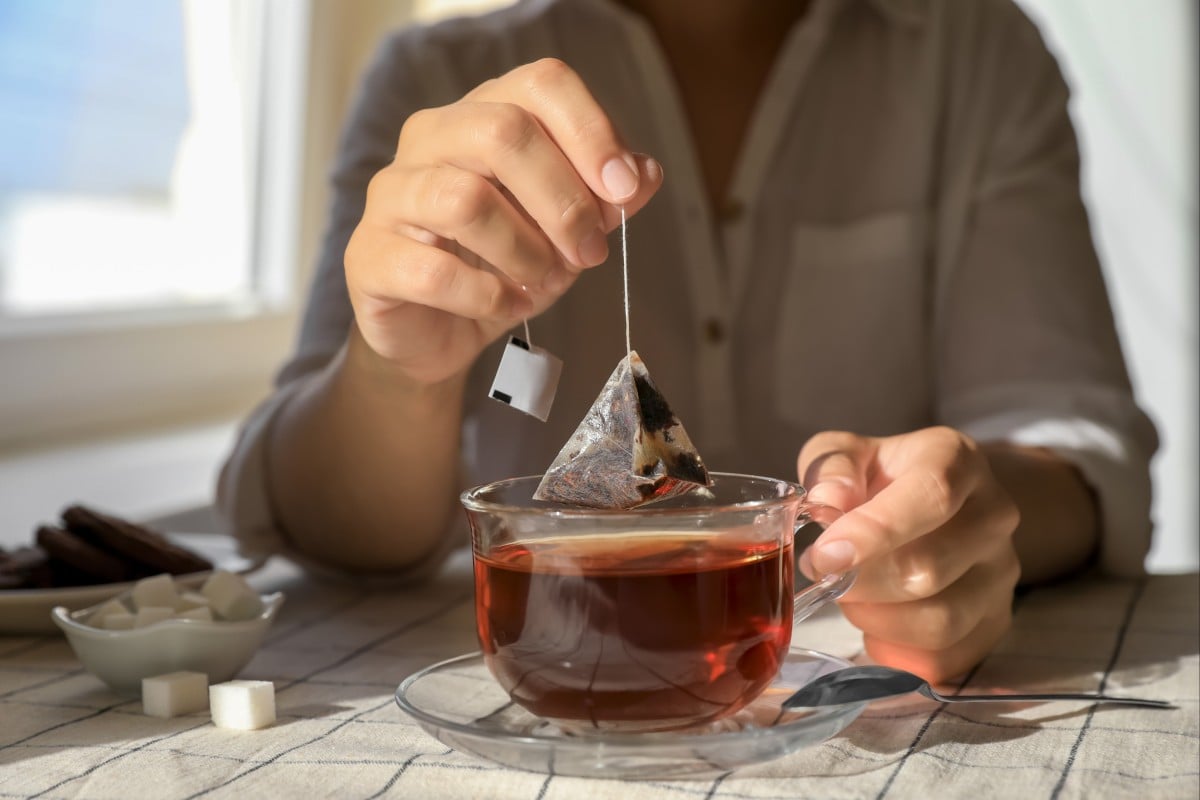 Hong Kong’s Green Council urges microplastic labelling as 80 per cent of the city’s residents remain unaware of risks in tea and coffee. Photo: Shutterstock
Hong Kong’s Green Council urges microplastic labelling as 80 per cent of the city’s residents remain unaware of risks in tea and coffee. Photo: Shutterstock A survey conducted by a green group found that about 80 per cent of Hong Kong residents are unaware that using tea bags and coffee filters can cause them to ingest microplastics.
The group is urging the government to follow Germany’s lead and include warnings about this issue on food labels.
Steven Choi Chun-pang, chief operating officer of the Green Council, said 70 per cent of respondents did not know how to identify products containing microplastics and only 20 per cent actively looked for them.
There is no legislation in Hong Kong that regulates microplastic labelling.
“Germany rolled out a microplastic-free label not long ago, which covers products from food, personal hygiene and make-up to cleaning products,” Choi said.
“I believe that having such labels will become a trend in many other countries as consumers become aware of microplastics and their harm.”
This call for action comes after the government’s decision to delay the second phase of its “plastic-free” policy, which was originally planned for 2025. The first stage, implemented in April 2024, banned single-use utensils, straws and styrofoam containers.
Professor Cheung Siu-kin of City University’s chemistry department said microplastics were relatively new to the public and academic research on their direct health implications was still limited.
Hong Kong students upcycle fashion for a greener future
The Green Council, a non-profit organisation focused on conservation in the commercial and industrial sector, collected 1,515 online questionnaires from residents regarding awareness of microplastics between April and May.
It found that 80 per cent of respondents were unaware that tea bags and coffee filters could release microplastics when steeped in hot water, while 60 per cent of consumers mistakenly believed that non-woven bags were environmentally friendly.
Cheung cited two independent studies indicating that a single plastic tea bag could release up to 11.6 billion microplastic and 3.1 billion nanoplastic particles after being steeped in 95 degrees Celsius (203 Fahrenheit) water for five minutes.
He added faeces samples from Hongkongers contained an average of 36.4 microplastic particles per gram, significantly higher than the 6.5 in Beijing and the average of two in Japan and European cities, according to research from Polytechnic University in 2022.
Cheung said the research attributed the high amount of microplastics to local eating habits.
“Hongkongers like to eat shellfish like clams, oysters and mussels. But the beaches and local waters are contaminated by microplastics in the form of decomposed plastic waste,” he said.
He also pointed to Hong Kong’s heavy traffic as a contributing factor.
“The United Nations has identified debris from vehicle tyres as one of the major sources of microplastic contaminants,” Cheung added. “We could ingest these microplastics through the air.”
Microplastics are defined as plastic particles measuring 5mm or less in diameter. They can originate from environmental debris or the breakdown of consumer products and waste.
Choi highlighted that clothing containing synthetic materials, non-woven bags and even make-up products could release microplastics.
“We hope that the public can become aware of green labels like the one from the Green Council in consumer goods, and reject buying, using or receiving products that contain microplastics, by replacing them with natural and environmentally friendly alternatives,” he said.
“It would be hard to monitor the production process of consumer goods, whether the process is free of microplastics. But hopefully, through our label and the government’s help in promotion, we could replace the use of plastic products.”
In response to Post inquiries, the Environmental Protection Department (EPD) said that the Regulation on Disposable Plastic Products, also known as the “plastic-free” campaign, had protected communities and the environment from the effects of microplastics by banning expanded polystyrene tableware and oxo-degradable products.
Regarding cosmetic products, the department said that it had launched a “Bye Bye Microbeads Charter” in September 2021 to eliminate the use of microbeads. It said the campaign had “remarkable success”, with more than 350 organisations and 160 microbead-free brands joining the charter.
“The EPD conducted a baseline survey on levels of microplastics in Hong Kong’s nearshore waters in 2019-20. Survey results revealed that the microplastics levels in Hong Kong nearshore waters are far below the thresholds that may pose potential environmental and ecological risks suggested by overseas literature,” it said.
